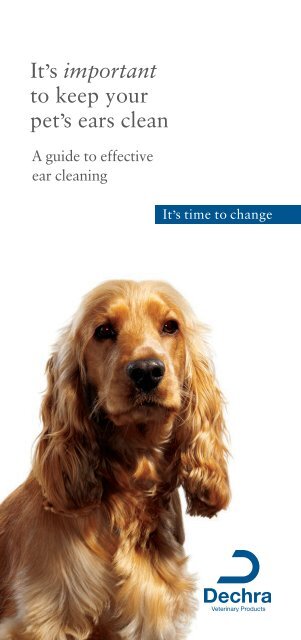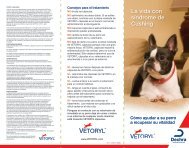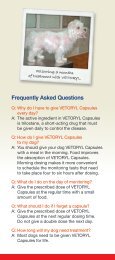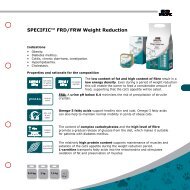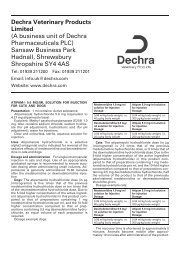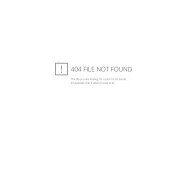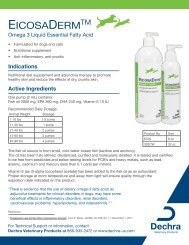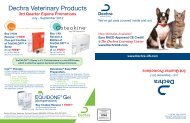11174 Cleanaural lflt.indd - Dechra-US.com
11174 Cleanaural lflt.indd - Dechra-US.com
11174 Cleanaural lflt.indd - Dechra-US.com
Create successful ePaper yourself
Turn your PDF publications into a flip-book with our unique Google optimized e-Paper software.
It’s important<br />
to keep your<br />
pet’s ears clean<br />
A guide to effective<br />
ear cleaning<br />
It’s time to change
Why it is important to keep<br />
your pets’ ears clean<br />
As a result of domestication and selective breeding,<br />
dogs’ ears vary enormously, not only amongst breeds but<br />
also within breeds. While excellent for collecting sound,<br />
the long canine ear canal can also accumulate wax and<br />
foreign bodies (such as grass seeds) or be<strong>com</strong>e diseased.<br />
In the latter situation, treatment by your veterinary surgeon<br />
will be necessary.<br />
The main uses of an ear cleaner can include one or more<br />
of the following:<br />
• Removal of wax or debris<br />
• To help maintain the condition of the ear canals in:<br />
a. Dogs predisposed to ear disease (e.g. dogs with<br />
pendulous ears)<br />
b. Dogs that swim<br />
Cats’ ears are generally less problematic, but they may also<br />
benefit from having their ears kept clean and wax-free.<br />
While not all ears need cleaning, those pets susceptible<br />
to ear problems will benefit from regular ear cleaning.<br />
Anatomy of the ear<br />
The vertical canal of the ear is corrugated along its length.<br />
At the base of the vertical canal is a right-angled turn<br />
where the canal be<strong>com</strong>es narrower and continues horizontally<br />
to the eardrum. Wax and other substances are continually<br />
produced along the entire length of the canal to keep the<br />
lining supple and healthy. Circulation of air in the canal<br />
can help prevent accumulation of excess wax.
VERTICAL CANAL<br />
INNER EAR<br />
MIDDLE EAR<br />
EARDRUM<br />
HORIZONTAL CANAL<br />
The ears of floppy-eared breeds (e.g. Spaniels) and those<br />
with lots of hair in the ear canal (e.g. Poodles) are less<br />
well ventilated, and are prone to suffering from problems<br />
caused by accumulation of wax and debris.<br />
However, any dog may develop ear problems.<br />
Wax and debris must travel upwards against gravity to<br />
escape – a difficult process, even when the ear is healthy.<br />
In the diseased ear, this natural cleaning process breaks<br />
down and, depending on the severity of the condition<br />
and the number of episodes, may not return to normal.<br />
In such cases, ongoing preventative care of the ears may<br />
be essential. Sometimes when treating a diseased ear, ear<br />
cleaners may be used alongside medicated drops.
How to use ear cleaners<br />
An ear with a build-up of excessive wax and debris in<br />
the upper part of the vertical canal will benefit from the<br />
application of an ear cleaner. While a dog is pictured in<br />
the cleaning process below, the same procedure applies<br />
to cleaning cats’ ears.<br />
1 Holding your pet’s head firmly, gently pull the ear flap<br />
up to open the ear canal.
2<br />
Carefully insert the nozzle into the upper part of the<br />
ear canal. Ensure there is a gap between the nozzle<br />
and the ear canal before gently squeezing a liberal amount<br />
of solution into the ear.<br />
3<br />
Massage the ear canal gently but thoroughly,<br />
working from the base upwards.
4<br />
5<br />
6<br />
Allow your pet to shake excess solution from the ear,<br />
then gently wipe away loosened wax and debris around<br />
the top of the ear, with cotton wool or similar.<br />
Do not poke anything down the ear canal – particularly<br />
cotton buds – as this may cause damage.<br />
Inspect the ear, and repeat if necessary.<br />
Clean the other ear.
Tips on ear cleaning<br />
• Clean your pets’ ears regularly, once or twice a week<br />
or as re<strong>com</strong>mended by your veterinary surgeon.<br />
Your pets will quickly get used to it, and the process<br />
will get easier.<br />
• Introducing cold liquid into pets’ ears may cause<br />
the pet to react, making cleaning more difficult.<br />
Always warm the solution to around body temperature<br />
before use by holding the bottle in your hand or<br />
placing it in a pocket for a few minutes.<br />
• Use the ear cleaner in a tiled room or outdoors,<br />
so your pet can safely shake its ears to remove any<br />
excess solution.<br />
Check out the videos at www.dechra.co.uk/how-to-guides<br />
for further advice about effective ear cleaning.<br />
Before using any cleaners, please<br />
check the precautions on the bottle.
Further information is available on request from:<br />
<strong>Dechra</strong> Veterinary Products Limited, Sansaw Business Park, Hadnall,<br />
Shrewsbury, Shropshire, SY4 4AS. Tel: +44 (0)1939 211200.<br />
Fax: +44 (0)1939 211201. <strong>Dechra</strong> Veterinary Products Limited<br />
is a trading business of <strong>Dechra</strong> Pharmaceuticals PLC. Registered in<br />
England No: 5385888. www.dechra.<strong>com</strong> Use medicines responsibly:<br />
www.noah.co.uk/responsible<br />
April 2012<br />
©<strong>Dechra</strong> Veterinary Products Ltd.


